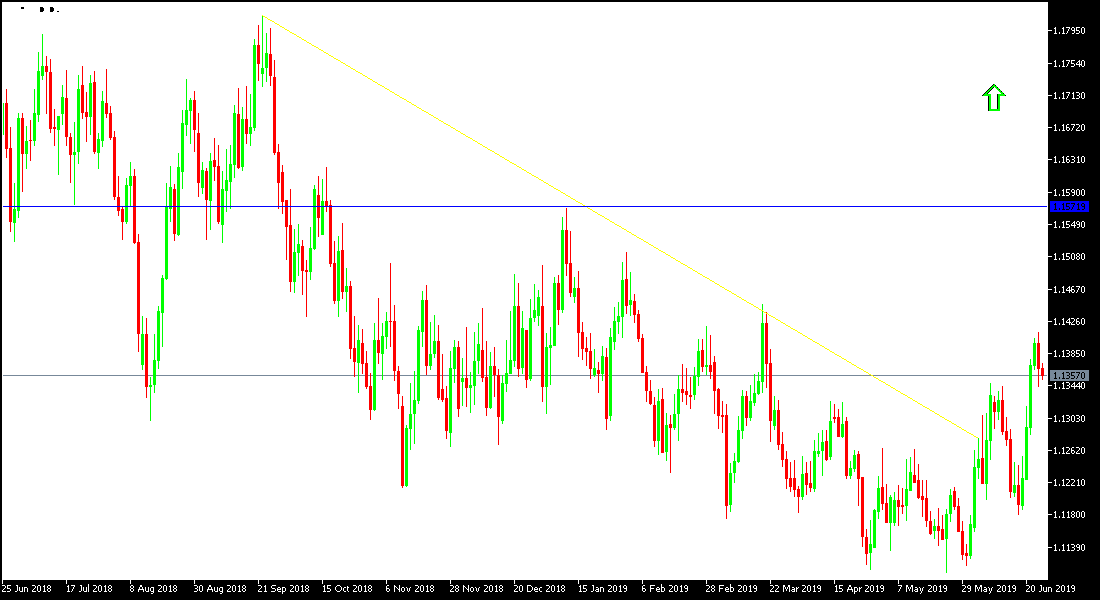The EUR / USD recent gains have stopped at the 1.1411 resistance level, the highest in three months, with the USD back to express itself and the pair retreated to 1.1343 support despite the negative US economic figures. The pair is now stable around 1.1358 at the time of writing. We saw a sharp drop in new US home sales and a drop in US consumer confidence to a two-year low.
Both the European Central Bank and the Federal Reserve have confirmed readiness to cut interest rates to cope with the economic slowdown. The recent US economic data confirm the US economic slowdown and therefore market expectations are that the US interest rate could be reduced as soon as possible.
The results of PMI data for the Eurozone economies' industrial and service sectors improved last week, helping to reduce pressure on the Euro. Markets are watching for an important summit between US President Trump and the Chinese president this week to determine the course of their trade war. The continuation of that war means that the Eurozone economy is slowing down and therefor, the Euro may lose its recent gains and more.
Both the European Central Bank and the Federal Reserve have confirmed readiness to cut interest rates to cope with the economic slowdown. The recent US economic data confirm the US economic slowdown and therefore market expectations are that the US interest rate could be reduced as soon as possible.
The German ZEW Economic Sentiment Index fell to its lowest level in seven months, confirming pessimism over the performance of the Eurozone's largest economy. On the daily chart below, it is clear that the pair lacks the sufficient and strong momentum for the upward correction. The European Central Bank (ECB) is in a cautious position, keeping the interest rates unchanged as expected, and ruling out a chance to raise interest rates later this year.
Continuing trade war between the United States and China will continue to be a significant pressure factor on the performance of the Eurozone economy. The growth of the US economy remains strong, boosting US consumer confidence to its highest level in 18 years. Pressure on the Euro rose after a pessimistic view of the outcome of the European Union (EU) elections, where anti-EU parties won more seats than expected.
The bearish stability supports investors' question of the most appropriate timing for buying: this will depend on the return of confidence in the Euro and optimism about the imminent resolution of the US-China trade dispute, which increases the pressure on the Eurozone economy, which depends on manufacturing and exports. Technical indicators are still confirming oversold areas and the pair is ready for an upward correction.
Technically: We had expected and recommended in the previous analysis for a long time to sell the pair from every ascending level. Turning to the EUR / USD bullish trend needs a move towards the resistance levels 1.1355, 1.1440 and 1.1515 to confirm the upward correction strength. On the bearish side, the nearest support levels are currently 1.1330, 1.1240 and 1.1180 respectively, which are levels confirming the renewed strength of the bearish trend.
On the economic data front, the pair will watch for the release of the German consumer climate index, GFK, and the US durable goods order and US oil inventories data.


